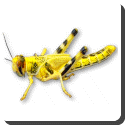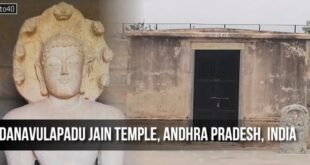 Locust — Locust is the swarming phase of short-horned grasshoppers of the family Acrididae. The origins and an apparent extinction of certain species of locust—some of which reached 6 inches (15 cm) in length—are unclear.
Locust — Locust is the swarming phase of short-horned grasshoppers of the family Acrididae. The origins and an apparent extinction of certain species of locust—some of which reached 6 inches (15 cm) in length—are unclear.
These are species that can breed rapidly under suitable conditions and subsequently become gregarious and migratory. They form bands as nymphs and swarms as adults — both of which can travel great distances, rapidly stripping fields and greatly damaging crops.
Though the female and the male look alike, they can be distinguished by looking at the end of their abdomen. The male has a boat-shaped tip while the female has two serrated valves that can be either apart or kept together. These valves aid in the digging of the hole in which an egg pod is deposited.
Locusts are used as models in many fields of biology especially in the field of olfactory, visual and locomotor neurophysiology. It is one of the organisms for which scientists have obtained detailed data on information processing in the olfactory pathway of organisms. It is suitable for the above purposes because of the robustness of the preparation for electrophysiological experiments and ease of growing them.
 Kids Portal For Parents India Kids Network
Kids Portal For Parents India Kids Network
